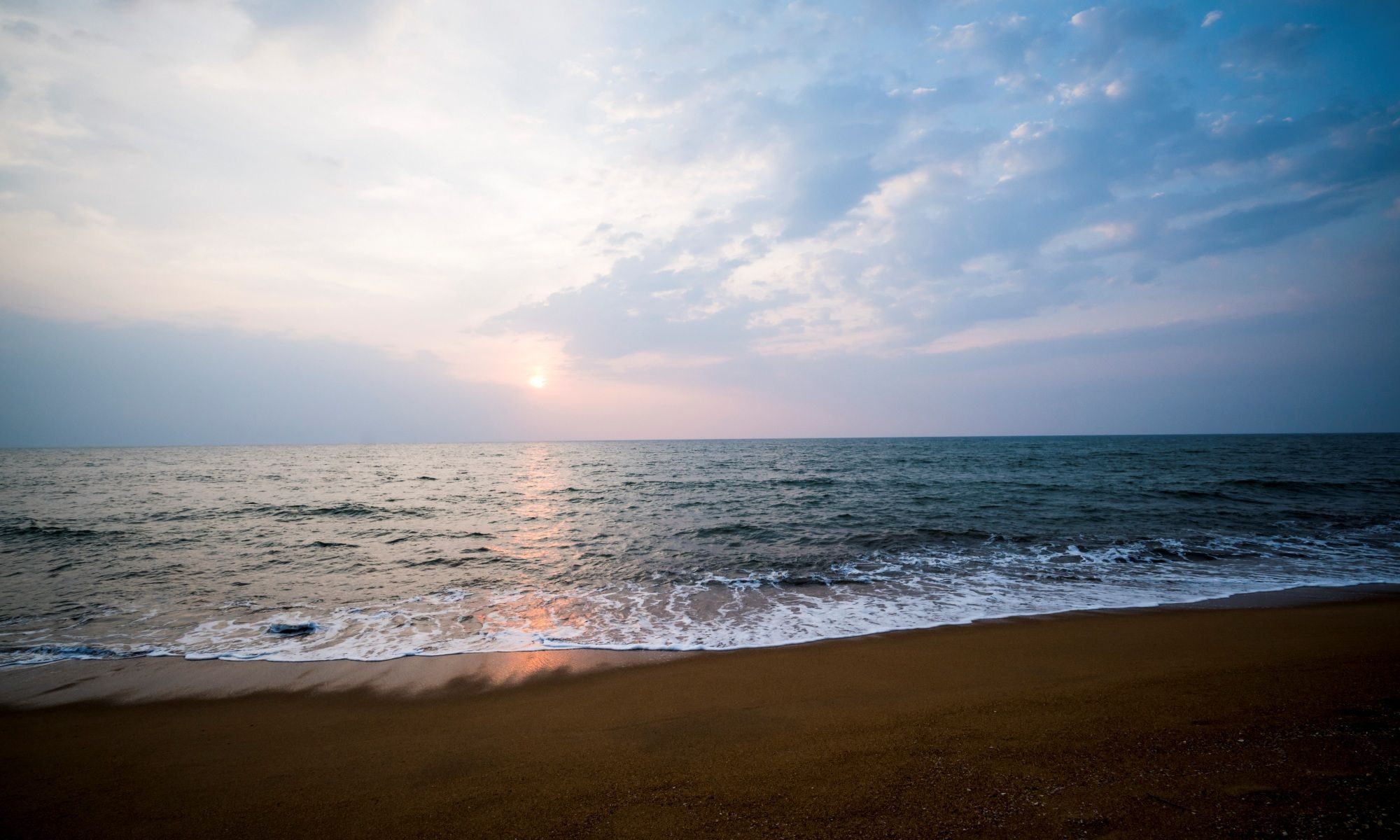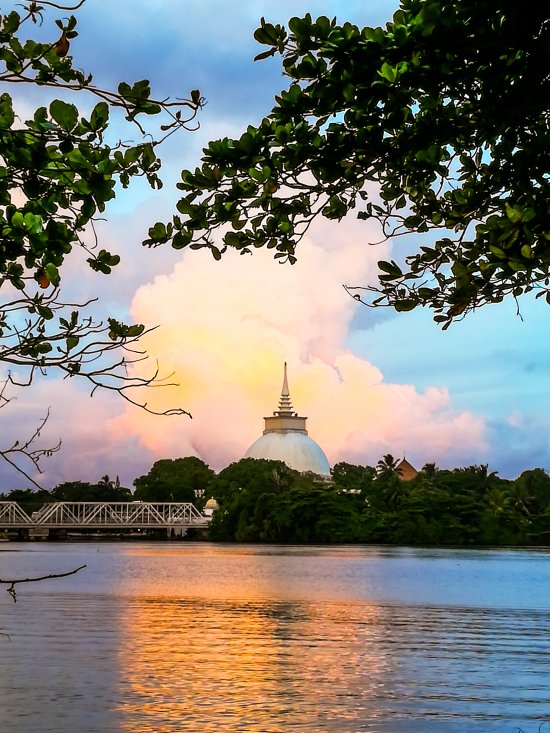
Kalutara Chaithya needs no introduction. It is that majestic white dome structure that stands tall at the Kalu river bank. You can get the first glimpse of it once you enter the city through the bridge over the Kalu River from Colombo direction. In fact, this venerated icon of the city can be seen from almost everywhere in the town.
What is a Chaithya ?
Chaithya, also called Stupa or Dagoba, is a structure found in Buddhist temples. In Sri Lanka these take the form of a hemisphere and a cone shaped pinnacle on top of it. Most of these stupas have remnants of Lord Buddha and his disciples enshrined within. These sacred relics cannot be accessed from outside.
What is so special about Kalutara Chaithya?
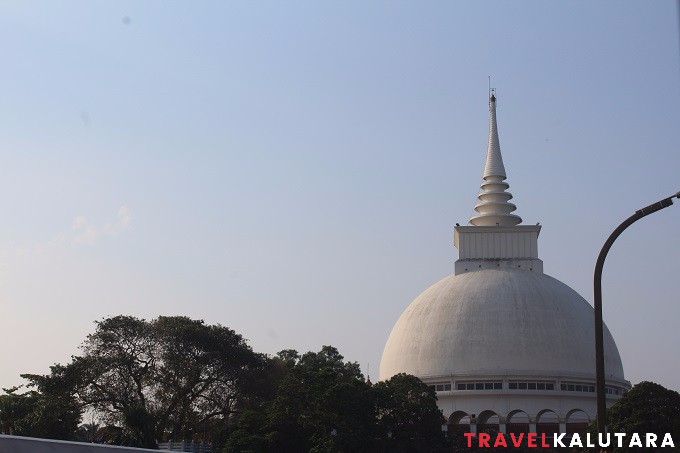
Built in 1970-71, Kalutara chaithya is the oldest hollow stupa in Sri Lanka. People can go inside the Stupa to find another small stupa is inside it with four Buddha statues. It is also called “Kalutara Wata da ge”. Which means the outerhouse of a stupa. Since there is a inner stupa inside, The Larger stupa is technically a Wata da ge.
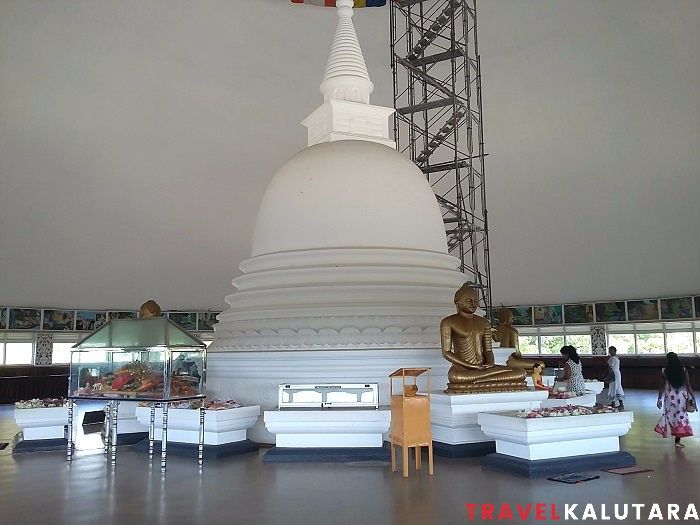
In 2016 the government finished the construction of Mahaweli Maha Seya in Kotmale. It is the second hollow stupa in Sri Lanka.
Essential Information
- Founder: Sir Cyril de Zoysa
- Foundation stone laid: 1964
- Pinnacle laid on: 24-01-1974
- Unveiling the Pinnacle and enshrining the relics: 28-02-1980
- Circumference: 300 ft
- Area covered by Stupa: 7,150 sq ft
- Diameter: 95.4 ft
- Height: 185 ft
- Architect: Justin Samarasekara Associates
- Engineer: Dr. A.N.S Kulasinghe
How Large Is it?
It is smaller than the ancient stupa’s in Anuradhapura but larger than contemporary stupas found in Sri Lankan temples.
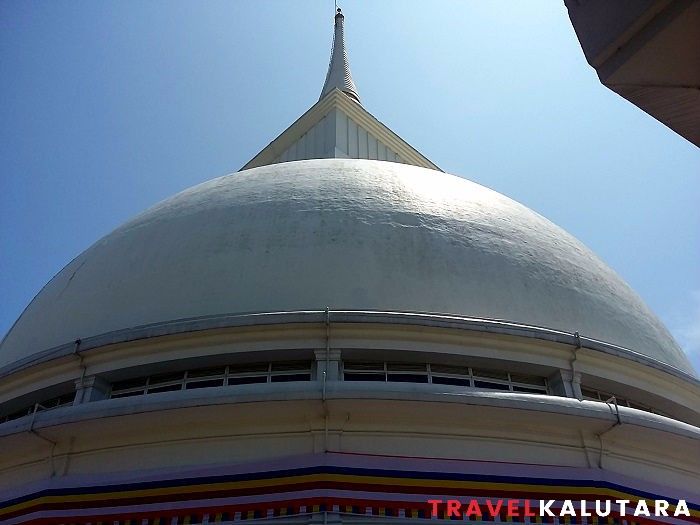
A Pioneer project in Sri Lankan engineering
- Engineered by the late Dr. A.N.S Kulasinghe who introduced pre-stressed concrete technology to Sri Lanka
- Justin Samarasekara Associates were the Architects of this project.
- Built on pre-stressed concrete frame
- The Dome was built using hemispherical thin concrete shells 5 ½ inches thick.
- Calculations done by the first computer in Sri Lanka owned by State Engineering Corporation.
The suggestion to create hollow structure by Dr. Kulasinghe had some opposition too. Prof. Senerath Paranawithana, renowned archeologist, opposed to the idea because this was completely a radical idea in contrast to the ancient stupa construction.
Since ancient times stupas were constructed by piling up soil in order to get the shape of a hemisphere and covering it up with bricks. Dr. Kulasinghe’s argument against this was since this land is on the bank of the river it might collapse under such weight. Eventually he succeeded in persuading the authorities and went on to build this grand structure using the local labour.
Tips to visit
Kalutara temple is one of the must visit places in Kalutara and quite easy to get to. The car park is located in the middle section of the bridge.
Dress appropriately; As is the custom when visiting Buddist temples, covering your knees and shoulders is a must.
It’s best to avoid Poya days (Full moon day) when the temple will be swarmed by locals
Kalutara temple consists of two sections, the upper terrace (hillock) where the Chaithya is and the lower terrace where the venerated Kalutara bodhiya is located.
To enter the bodhiya you need to walk through the subway and come up on the other side of the road.
Important point to keep in mind that entry to the temple is free of charge and avoid any scammers who say otherwise at all cost. They will approach you as cordial guides who want to explain things but eventually ask you to pay thousands of rupees for their trouble.
You can donate money to the temple by putting money into the designated boxes inside the temple.
You can enter the premises with your shoes but make sure to leave it in the shoe storage facility to the immediate left when you enter the upper terrace via the main gate. You’ll have to pay a small fee to guy who look after the shoes.
The Inside
To enter the Chaithya you need to climb the two staircases. First a concreate staircase to reach the outer area of the stupa and a wooden one inside the stupa to reach the inner worshipping area.
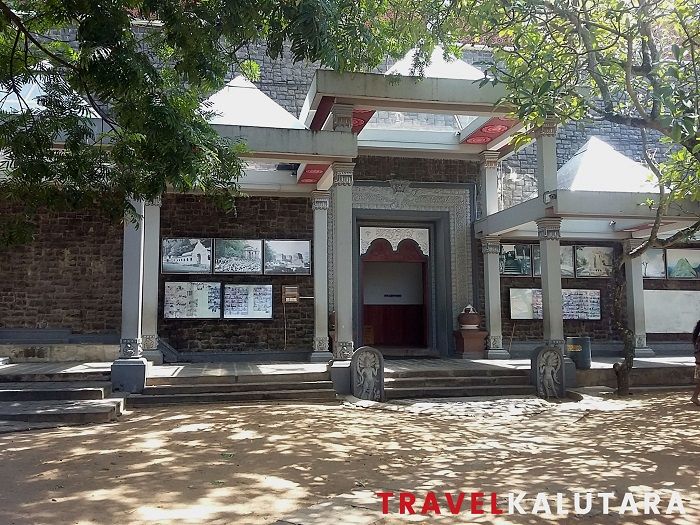
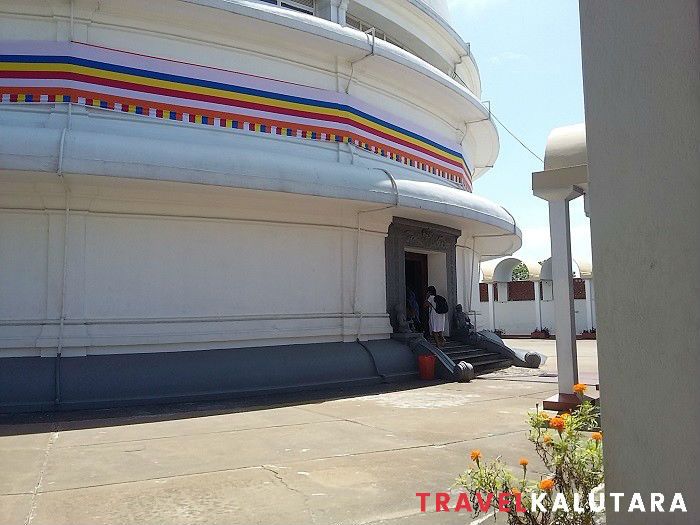
The Most prominent thing you’ll notice once you step in to the inner area is the small stupa (height 6 feet) encircled by four gold painted Samadhi Buddha statues.
There are also 75 impressive artworks on the wall depicting the life story of Lord Buddha based on the Jathaka Tales. These arts are captioned in both English and Sinhala. Though the exact name is unknown, The Artworks are said to have been done by an artist from Kandy.
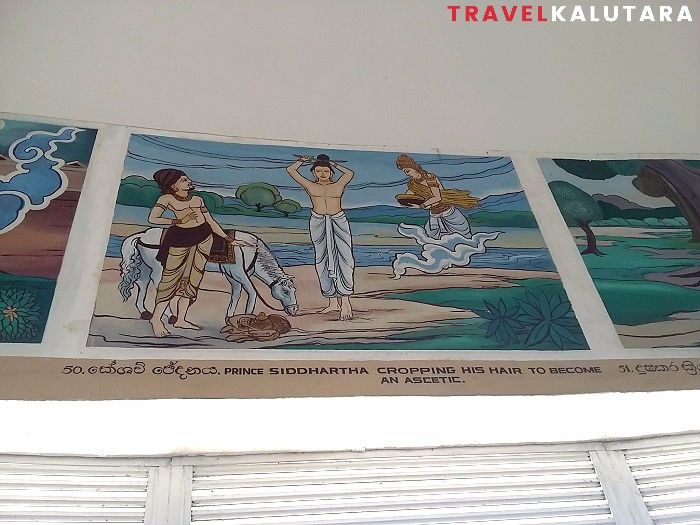
Glass-paned windows let visitors to appreciate the scenic views of the bridge and meandering Kalu river nearby. Echoing sounds of the visitors enhance the divine vibe of this sacred place.

If you visited in the evening you can listen to the daily pirith chanting by the monks. This is a quite an enchanting experience to be had while you’re in Sri Lanka. Once outside, head to the Bodhiya to the right of the Chaithya and Observe the locals clad in white make offerings, worshipping, alighting oil lamps.
Take in the invigorating smell of sandle sticks. These are all part of the serene experience in store for you at Kalutara temple. Just past the Bodhi tree, you can enjoy an unobstructed view of the calm Kalu River and soft breeze stemming from it.
If you happened to visit here in May, make sure to visit the Chaithya at night to observe the magnificent lights adorn the stupa and the temple. It is the glorious time of vesak celebrations and the decorations are sights to behold.

